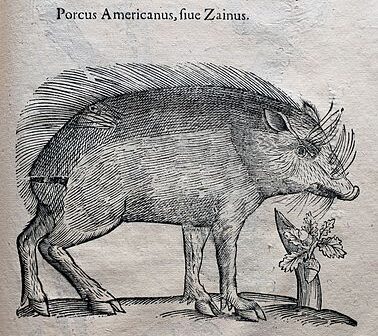It would be completely foolish and inconsiderate to think of tackling a project dedicated to the historical research of biodiversity and culinary habits without talking about a figure who was born and lived in my neighbouring (and until less than a century ago, also the regional capital) Bologna: Ulisse Aldrovandi. I would therefore like to say a few words about this man, who lived between the 16th and 17th centuries, and inaugurate a series of articles dedicated to naturalists, cooks, stewards and chroniclers who contribute their writings to this research path that is Cornucopia.
Even as a young boy, Ulysses was curious and driven by a desire to learn that made his blood flow and his muscles and bones vibrate with energy. He ran away from home as a little more than a child, just a handful of years after the coronation of Charles V just a stone’s throw from his home, in a city still reeling from the conflicts with France. Still a young boy, and gripped by a desire to learn about the world, he sneaked into Modena where he dressed in pilgrim’s clothes to make a long journey to the burial place of the apostle of Jesus Christ, James, in Spain. A place today famous by the name of Compostela. Perhaps it was that journey that triggered in him the desire to learn and catalogue all the natural beauties of the world
The importance of his works, which are still preserved in Bologna, are such that they influenced even the likes of Linnaeus, who considered him the father of modern Natural History. To get an idea of who Linnaeus is: you know that L. listed next to all the names of plants and animals on Wikipedia? That’s him.
Aldrovandi devoted himself to a life of study, juggling philosophy and jurisprudence that were not those of today but part of a well-rounded cultural baggage of a ‘universal man’ that has been lost over the centuries. His efforts to classify and catalogue everything he could collect and observe occurred during the years of the establishment of the Archiginnasio and the Orto Pubblico, which he managed for decades.
In many respects, Cornucopia represents, in a way, the opposite of Aldrovandi’s work. His efforts were aimed not only at a work of identification circumscribed to a cultural microcosm such as Italy might be, or to the sphere of gastronomy alone, but was projected onto a universal vision. These were the years following the discovery of the Americas and Ulisse’s curiosity was probably particularly stimulated by what we would call ‘allochthonous’ life forms. His thinking was so irrepressible that he went as far as the territories of cryptozoology, into a world of monsters and chimeras. Yet in his plates I lost myself for days imagining what those strange fruits and animals might have looked like four centuries ago.

In addition to admiring him as a person and innovator, and being fascinated by his endless curiosity, I would like to invite everyone today to browse through his plates or visit the Garden and its collection in Palazzo Poggi a Bologna. The splendid plates partly illustrated by himself and partly painted by great contemporary artists, the hundreds of dried leaves and plants (Aldrovandi was a pupil of Luca Ghini, whom we will return to in another post where we will discuss botanical gardens), are also available online.

